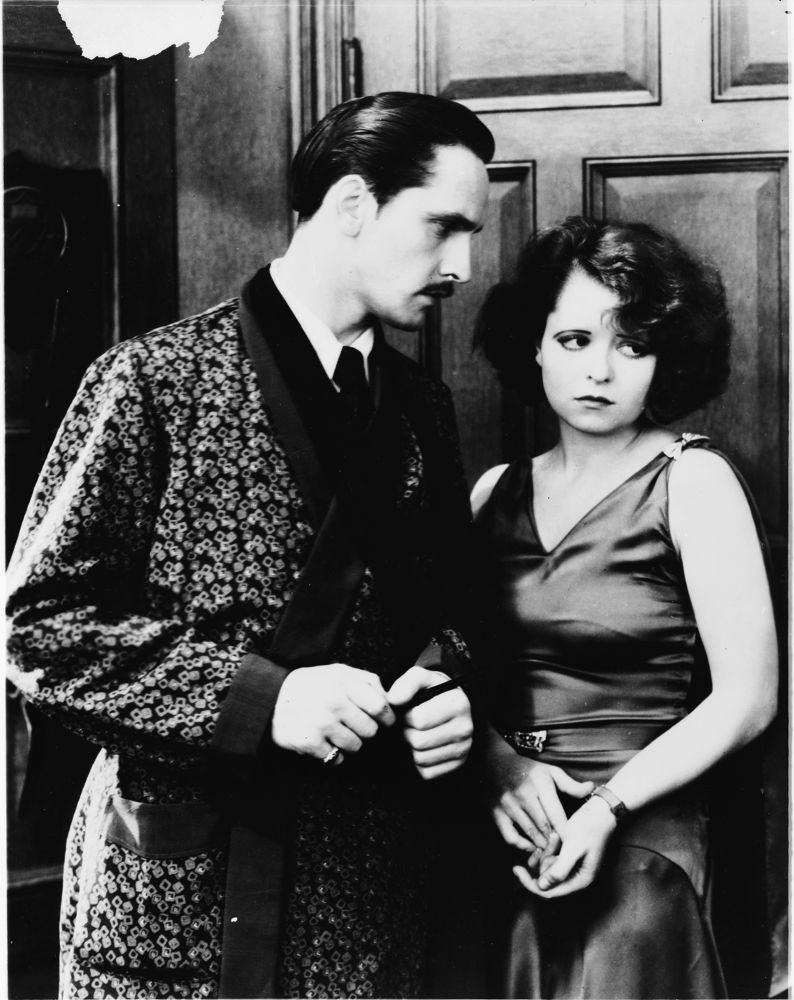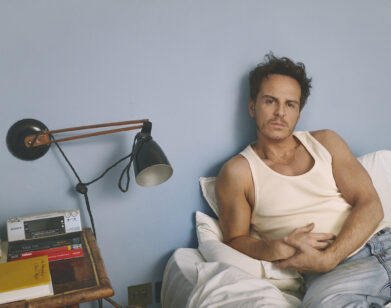The Early Days of Queer Cinema
As the co-founder of Light Industry and Programmer-at-Large for the Film Society of Lincoln Center, Thomas Beard has been programming films in New York since his early 20s. Almost a decade later, Beard and has become a potent force in the city’s vibrant cultural life. Light Industry, which Beard founded with Ed Halter in 2007, is a revered hotspot for innovation in the electronic arts that screens avant-garde films and provides a forum for academics and practitioners alike to come together and discuss film.
For his first series at Lincoln Center, “An Early Clue to the New Direction: Queer Cinema Before Stonewall,” Beard is looking into the archives of queer history, and, in so doing, is participating in a larger reassessment of art and culture beyond “gay rights.” The program features an impressive array of experimental films, Hollywood mainstays, quirky shorts, documentaries, and medical films that remind us of the unsung explosion of queer creativity before the historical “break” marked by the Stonewall Riots. With its research-driven approach and commitment to both education and entertainment, it is clear that “Before Stonewall” will be a landmark intervention in the ongoing discussion of queerness both historically and in contemporary society.
WILLIAM J. SIMMONS: Watching the screeners in preparation for our interview, I had this giddiness, because I love stuff like this, and also this simultaneous anxiety and melancholy. When I told my mother that I wanted to do queer studies she said, “Isn’t it exhausting to be studying yourself all the time?” It’s true; I find it both exhausting and joyful to revel in gay shit!
THOMAS BEARD: Right, but if we don’t study it, who will? It’s our responsibility to be our own exegetes.
SIMMONS: A Fragment of Seeking (1946) seemed like an illustration of that fact—this perpetual, terrifying, and erotic search that queer people must undertake in order to fundamentally exist.
BEARD: That’s why I wanted to show that with The Case of Mr. Lynn (1955), which is a full therapy session with a troubled young invert. It’s an equally fascinating, though less oblique, journey through gay inner life.
SIMMONS: What has this process of self-archiving and introspection been like as you put together the film series, especially since you are also thinking about education for the public?
BEARD: There is a sense of political responsibility to help write this history that remains, in some respects, unwritten. Of course it’s not fully unwritten, but it is a history where so many lacunae remain. The history of queer cinema and representation has been written by Richard Dyer and Patricia White and so many others, for example, but there is still much work to be done. On a personal level, this is a show that I would have wanted to see myself. It’s a show that I wish I had been able to see when I was younger. It would have given me a more thorough and complicated sense of what queer cinema has been and, in turn, would have helped me understand what it could be in the future. As I was preparing the show, a scene from my memory that I kept coming back to was a seminar with the film historian Janet Staiger, one of my mentors. She let me into her one of her graduate seminars when I was 19 called “Sexualities and U.S. Film.” We looked at avant-garde films, old Hollywood films, pornography; the breadth of films under consideration in that class was very inspiring, and provided a kind of model for the series at Film Society. Janet was one of the first people who made me feel like my ideas were worth listening to, and, at a tender age, that means quite a lot. I’m hoping that “Before Stonewall” can likewise be an education for folks.
There’s something very appealing to me about queer cinema before Stonewall because it’s incredibly accessible and immediately legible. You could say “before Stonewall” to almost anyone who would potentially be interested in the series and they would comprehend immediately the basic organizing principle of the show. Still, even if people might understand the purview of the genre, what it contains might still be largely unfamiliar. What you have, then, is the very exciting possibility of audiences coming to work that they wouldn’t have encountered otherwise, because there’s such clarity and simplicity in the overarching design. So it’s my hope that people will be turned on to, say, Germaine Dulac and Gregory Markopoulos, or other important figures that maybe they’d never encountered previously.
In New York, there’s so much going on, and film culture is so rich and varied, but if you don’t already know what to see and what to look for, it can be difficult for a casual moviegoer to navigate. I wanted to help chart a course for people who are interested in the subject, but are relatively unfamiliar with many of the films that comprise early queer cinema.
SIMMONS: Returning to accessibility, the parameters of the series are certainly legible and inviting, but the films are challenging at the same time.
BEARD: Absolutely. “Accessible” is an interesting word. Sometimes, say in a work of criticism, it can be a euphemism for compromise or a lack of adventurousness (“the band’s most accessible album to date”). My work at Light Industry has proven to me that the audience for challenging, difficult cinema is far, far larger than I think a lot of people might assume, especially in New York. New York is home to very diverse audiences; you just have to make a case for the work.
I first moved to New York and started showing films when I was 20. I screened Der Tod der Maria Malibran (1972) by Werner Schroeter, one of my favorite films, around that time. I sent out announcements, and J. Hoberman wrote something in the Voice calling Schroeter the missing link between Rainer Werner Fassbinder and Jack Smith. J. Hoberman was, and remains, one of my heroes, so I thought, “Wow, this is really happening! You’re showing movies in New York!” And then like 10 people showed up and I was totally crestfallen.
In my early 20s, I had a real “If I show it they will come” attitude, which was naïve and assumed that the remarkable qualities of the films I was showing would be self-evident. That’s not the case if you’re trafficking in relatively obscure or underappreciated works. When Ed Halter and I began Light Industry, it felt like one of our main responsibilities was to make an argument for every screening, to address a general audience and convince them that there was an urgent reason to see these films. Likewise, I want this series to be accessible and inviting, even if the movies being shown can often be demanding on a formal level. The series asks audiences to look more closely, not simply at visual experiments but also at classical Hollywood films, to attend to them in new ways. It’s a key distinction, ultimately, that the work be accessible in that its significance is communicated clearly and intelligently to a wide range of people, but not “accessible” in the sense that the work itself is pedestrian.
SIMMONS: It seems to me that what you’re talking about is the essence of queerness itself. Queerness is, in some sense, always composed of double entendre and undercurrents. It’s secretive, but it’s between public and private. In that sense, at the level of outreach and programming, you’re taking into account the fact that queerness, as an identity, is both legible and illegible.
BEARD: One of the main projects of this series is certainly to operate with an elastic definition of queerness and queer cinema, and to stress emphatically that “queer” is not a monolith. It is, as you alluded to, a contradiction. I had this on my mind—the multiplicity of meanings inherent in queer and queer cinema.
SIMMONS: I’m always wondering about exhibitions with work deemed “queer” that includes artists who do not identify as queer. The films in “Before Stonewall” definitely point to the possibility of queerness being more expansive than we have defined it thus far.
BEARD: To begin with, you have to acknowledge films that are more straightforwardly queer in the sense that there are gay and lesbian auteurs making them, and the subjects they engage with are “queer” in some way. But that is only one part of the story. In the case of Dorothy Arzner, you have a brilliant lesbian director in Hollywood in the 1920s and 1930s who was a queer auteur, yet obviously, at the time, could not make overtly lesbian films for Paramount. Any history of queer cinema that leaves her out would be greatly lacking. You also have filmmakers, like Robert Aldrich, who are not themselves gay but who deal, in quite extraordinary ways, with questions of queer desire.
SIMMONS: Although queerness is an expansive lens, there is also something deeply personal and affective and individual about it to “the queer community,” if one can delineate such a thing. In Hold Me While I’m Naked (1966), there’s a moment where the director, George Kuchar, literally bathes in film, like it is his lover. What is it about the movies, imagination, fantasy, glamor, artifice, etc. that appeals to gayness or queerness or some non-normative mode of looking?
BEARD: Hold Me While I’m Naked is one of the great films about not getting laid. To me, the pathos of sexual hunger is one of Kuchar’s main subjects as an artist. It’s a quality of his work that is often overshadowed by its humor. The melancholic aspects of queer films are sometimes among the most powerful. When Kuchar makes dime-store approximations of grand Hollywood melodramas, it is, in one sense, a joke—and a very funny one. But it is also something else. There’s a dash of tragedy along with the irony.
“AN EARLY CUE TO THE NEW DIRECTION: QUEER CINEMA BEFORE STONEWALL” IS ON AT LINCOLN CENTER THROUGH MAY 1, 2016.







